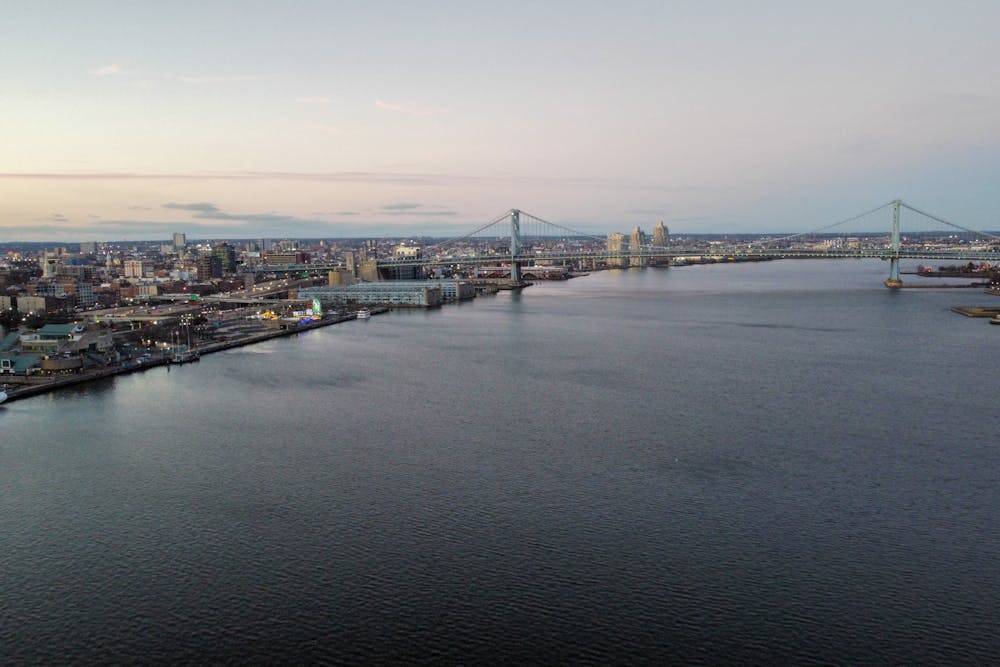Researchers at the Water Center at Penn made several recommendations for improving water quality in the Delaware River to allow for safer swimming, fishing, and drinking conditions.
A 27-mile section of the Delaware River from Philadelphia to Camden is considered unsafe for swimming due to fecal bacteria levels. The study assessed the river's water quality conditions and identified six local sites where swimmable waters are achievable within five years.
Director of Applied Research and Programs at the Water Center Ellen Kohler led the project, which involved data collection, engagement with stakeholders, analysis of policy and regulations, and desk research.
The researchers found that bacteria levels in the Delaware River varied depending on the location and month. Water quality conditions worsened during wetter months, and the highest fecal bacteria levels were found near a combined sewer outfall, which are large pipes that empty sewage in rivers such as the Schuylkill.
According to the report, successful efforts have already been made to reduce stormwater and sewage outflow. In 2011, the Philadelphia Water Department launched the Green City, Clean Waters 25-year plan and reduced overflows by three billion gallons, using technology such as rain gardens to absorb stormwater.
The PWD also received nearly $25 million in funds from the American Rescue Plan Act of 2021, $15 million of which will be used to fund a pretreatment building to reduce combined sewer overflows by 600 million additional gallons each year for the next three years.
However, the study found that there is not enough funding to pay for infrastructure costs — the estimated cost to improve combined sewer overflow is $2 billion. Additionally, there are other financial considerations, such as removing chemicals from drinking water and replacing lead pipes.
The researchers reported that improving old sewage infrastructure is one of the most significant obstacles to achieving “swimmable” water. PWD Deputy Water Commissioner for Planning Marc Cammarata said that after the 25-year plan, there will still be over five billion gallons of combined sewer overflow — and fixing the issue is estimated to cost between $4 and $5 billion.
RELATED:
Penn Med Nudge Unit launches four pilot projects to improve patient service
Penn awarded $2 million grant from NASA to fund research on lunar robots
“It may take decades for the city to achieve swimmable conditions,” Cammarata told WHYY. “These costs must absolutely be balanced with multiple evolving regulatory obligations — including replacing lead service lines, protecting our drinking water from emerging contaminants like PFAS, managing nutrients and improving dissolved oxygen in our water bodies from our treatment plans.”
Given the high cost of improving infrastructure, Penn researchers suggested multiple cost-effective and timely methods to improve water quality.
The study identified six watersheds that could be prioritized for treatment, finding that these sites are close to meeting safety standards and are accessible to communities that do not currently have opportunities to engage in water activities. Based on the study, swimmable waters at these watersheds could be achieved in a cost-effective manner within five years.
Researchers also proposed solutions for improving water quality in the Delaware River, such as advocating for funding, investing more in green stormwater infrastructure, and using a community science monitoring network to engage and inform the local community about bacteria levels.
Other low-cost strategies can be implemented to address pollution, such as trapping litter and sewer solids with netting or filtering out water particles and debris before the water reaches a pump.
“I think the general public … is hopefully going to start to understand how complicated this is, and how expensive this is,” Executive Director of the Water Center at Penn Howard Neukrug said to WHYY. “It’s important to know how far we’ve come, and how far we still need to go, to make the Delaware River fishable, swimmable, and drinkable.”









